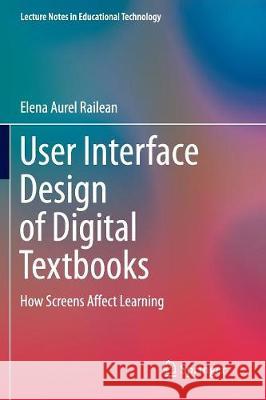User Interface Design of Digital Textbooks: How Screens Affect Learning » książka
topmenu
User Interface Design of Digital Textbooks: How Screens Affect Learning
ISBN-13: 9789811096211 / Angielski / Miękka / 2018 / 99 str.
User Interface Design of Digital Textbooks: How Screens Affect Learning
ISBN-13: 9789811096211 / Angielski / Miękka / 2018 / 99 str.
cena 201,72 zł
(netto: 192,11 VAT: 5%)
Najniższa cena z 30 dni: 192,74 zł
(netto: 192,11 VAT: 5%)
Najniższa cena z 30 dni: 192,74 zł
Termin realizacji zamówienia:
ok. 22 dni roboczych
Bez gwarancji dostawy przed świętami
ok. 22 dni roboczych
Bez gwarancji dostawy przed świętami
Darmowa dostawa!
Kategorie:
Kategorie BISAC:
Wydawca:
Springer
Seria wydawnicza:
Język:
Angielski
ISBN-13:
9789811096211
Rok wydania:
2018
Wydanie:
Softcover Repri
Ilość stron:
99
Waga:
0.17 kg
Wymiary:
23.39 x 15.6 x 0.58
Oprawa:
Miękka
Wolumenów:
01
Dodatkowe informacje:
Wydanie ilustrowane











